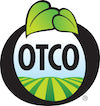
People eat high protein diets for a number of reasons—usually those are to support fitness goals, muscle building, and weight loss. But what about younger looking skin? Can a high protein diet help you look younger?
According to renowned physician Dr. Mercola, foods high in protein—whey protein specifically—may help to make you look (and feel) younger without having to spend thousands of dollars on expensive skin care products or anti-aging treatments or surgeries.
The reason whey and a high protein diet may give your skin an age-reversing boost has to do with telomeres—bundles of DNA found in every cell of the body. As we age, our telomeres shrink, which scientists think is most likely due to free radical damage.
Free radicals get into our body in numerous ways: from the unhealthy foods we eat to environmental pollutants—and even chemicals in this so-called anti-aging skin care products.
But glutathione, an antioxidant the body produces when it’s exposed to the amino acids glycine, glutamate, and cysteine, which are abundant in whey protein, has been shown to prevent telomere damage and may even help restore length back to telomeres.
This is exceptionally good news for your face—as well as the rest of your body.
Because whey protein is high in the amino acids that produce glutathione, you’re giving your cells a chance to rebuild and refresh. And for your face, this can mean fewer wrinkles, less unsightly dark circles and bags under your eyes, and firmer, healthier looking skin over all.
“Whey protein is the easiest and most convenient way to do this,” says Mercola. “But not just any whey protein will do, it needs to be high quality and very carefully processed from grass fed organic cows to preserve the fragile amino acid precursors.”
We won’t argue with that!
Check out The Organic Whey and see if you notice a younger looking you in the mirror.
Image: milan aumen

If exercising seems to be getting more difficult as you age, you may find your cognitive function becoming more challenging, too. That’s the findings of recent research linking exercise benefits to better mental function.
Research published in the forthcoming issue of the journal NeuroImage looked at the health of aging Japanese men ages 64 to 75.
The researchers test the aerobic health of the men as well as the cognitive functions of the men, measured by infrared probes monitoring blood flow and oxygen uptake in the brain.
“With the probes in place, the volunteers completed complex, computerized tests, during which names of colors appeared in type of a different color. The word blue would appear in yellow type, for instance, and the volunteers would be expected to press keys corresponding to the name, but not the hue, of the word,” reports the New York Times.
Younger test subjects—about half the age of the older subjects—showed more activity in the left hemisphere of the prefrontal cortex, which demonstrates attention and decision-making skills.
“But when the scientists examined the brain activity of these older men, they found that most also required activity in their right hemispheres,” the Times explains. “They needed more of their brains to pitch in in order to complete the task.”
That wasn’t true, however, for the most aerobically fit older volunteers.
“The fittest men showed little or no activation in their right hemispheres; they needed only their left hemisphere for the task,” the Times reports, just like the younger test subjects.
The fitter older men were also more accurate and faster in the computer keystrokes for the test, than the older subjects who weren’t as fit.
Study researchers say the data point to a strong correlation between higher aerobic fitness and improved cognitive function.
“Fit older people’s brains require fewer resources to complete tasks than do the brains of older people who are out of shape,” the Times summarizes.
The study did not look at the types of exercise the men were performing, only their overall aerobic health.
The upshot of the findings, he said, is that daily mild exercise such as walking and mild jogging may affect the way the brain works, so that an older person’s brain “acts like a younger brain.”
image: kris krug
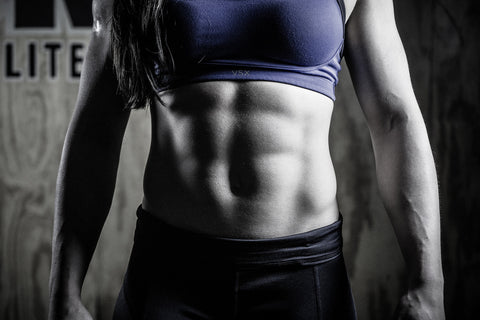
In case you haven’t looked at a calendar lately, we’re almost halfway through December. And even if you swore you weren’t going to be seduced by sugar cookies and pumpkin spice lattes again this season, you may still have overdone it elsewhere in your diet. Fasting for weight loss is a quick and easy way to undo the holiday indulgence. But what about losing muscle mass? You don’t want a fast to undo all your hard work at the gym either.
So, how to have the best of both worlds?
Well, there’s some good news about fasting for weight loss. First—you should always consult with your primary care physician before undergoing any type of fast or detox. Once you’re given the go-ahead, you have to determine the best fast program for your needs.
If you’ve never fasted before, a water fast might be too intense. Even just juices and tea might be harsh for beginners. Some people have had benefits from eating a raw food diet for several days, or even switching to just a plant-based vegan diet for a short period of time to spur weight loss.
Once you’ve decided which fast is right for you, several things will happen:
1. You’re going to feel kind of crappy—That’s the normal first stage of fasting for weight loss, along with incredible hunger. It’s a good idea not to be alone on Day 1 so that you have some moral support to keep you going.
But there’s good news! Once you get past the first day or two, you’ll most likely start to feel really amazing and energized.You’ll start to burn fat—The reason fasting is so effective at helping you lose weight is that it kicks your body into ketosis—the state where it begins to burn fat for energy. However, ketosis doesn’t usually start until 48 or 72 hours after you’ve begun fasting. And there may even be a little bit of muscle loss prior to that as the body tries to fuel itself by pulling glycogen stores from muscles. It quickly realizes there’s an easier source—your excess fat, and it will then start burning your fat (ketosis), which can typically keep it going for quite a while (and luckily, you probably have some fat reserves lingering around your midsection or thighs, right?).
2. You’ll start to burn fat—The reason fasting is so effective at helping you lose weight is that it kicks your body into ketosis—the state where it begins to burn fat for energy. However, ketosis doesn’t usually start until 48 or 72 hours after you’ve begun fasting. And there may even be a little bit of muscle loss prior to that as the body tries to fuel itself by pulling glycogen stores from muscles. It quickly realizes there’s an easier source—your excess fat, and it will then start burning your fat (ketosis), which can typically keep it going for quite a while (and luckily, you probably have some fat reserves lingering around your midsection or thighs, right?).
Once the body burns through your fat reserves, it will then start looking bak at your protein-rich muscles as another source of energy.
But the good news is that doesn’t typically happen in short 2 or 3 day fast—or even a 5 day fast, meaning you will most likely retain your muscle mass while you fast.
As to working out during a fasting period, there are mixed opinions on what’s best. On a water or liquid fast, you’ll likely be too exhausted to hit the gym for a lifting sesh, and even some cardio can be too intense. But it is important to keep the lymphatic fluids moving to flush out toxins (another important reason for fasting!). So brisk walking or hiking or even taking a swim might be your best bet for keeping your muscles active while fasting without overdoing it.
image: health cadanjig

Both the paleo diet and primal blueprint have been touted as dietary tools for losing weight and keeping it off. While the diets are similar in many areas, there are some stark differences, mainly surrounding the consumption of dairy products, like whey protein powder. So, where exactly does whey fit into these diets?
You may likely be more familiar with the popular paleo diet. It emphasizes eating like our cave-dwelling ancestors, a feat that’s rather impossible actually. For one, we can only really guess as to what their diets were—hunted game animals, and foraging for fruits, leaves, etc in the wild. But all of those foods—from the animals to the fruits—have been bred for flavor, color, and size over the millennia. In other words, even the stripped down paleo diet is filled with foods our ancestors might not recognize.
Still, it’s the concept paleo eaters are after—eating pre-agriculture, which means so refined grains, sugars, fats, even limiting salts. The focus instead is on non-starchy vegetables, nuts, seeds, and meat, but no dairy. After all, dairy is one of the oldest agricultural products. Cave people weren’t chasing down pregnant cows or camels for their milk.
The primal blueprint, conceived of by former endurance athlete Mark Sisson, is rather similar to the paleo diet. But the primal blueprint allows, let’s just say, for a little coloring, or rather, eating, outside the lines. Where primal differs from paleo is that it does allow dairy products, like yogurt, kefir, and even whey protein powder. It also allows for potatoes, rice, and quinoa, which while used as a grain, is technically a seed. Primal eaters can also enjoy red wine and chocolate, two additions surely to make the primal diet much more beloved, if not enduring.
So if you’re looking to these diets, especially this time of year when temptations abound, the primal diet may be the way to go. Not just so you can indulge in wine and chocolate, but so you have more options—healthy ones at that.
Dairy products like whey protein powder have been shown to aid in achieving weight loss goals. It can also be a helpful tool in converting fat into muscle in conjunction with a workout plan.
image: Lord Jim

If you’re looking to burn fat, you may have heard about kicking your body into ketosis—a state where it burns (excess) body fat for energy by way of eliminating carbs from the diet (the body’s preferred source of energy). But what about a high protein diet, something you may be using to boost your fitness goals? Does a high protein diet kick you out of ketosis? Or can it help?
When eating for a short-term ketosis diet, you may not be inherently eating a high protein diet. Instead you may be eating more vegetables and fats. But protein certainly plays a part in a ketosis diet.
One reason protein is so important on a ketosis diet is that protein-rich foods help you to feel fuller longer. While carbohydrates can digest quickly, leaving you hungry for more, protein-rich foods will fill you up even in small amounts (just see how hungry you are after a handful of nuts).
Protein is also more labor intensive for your body to digest, which means you actually burn more calories digesting protein than many other foods—and that’s calorie-burning you don’t have to do at the gym! The slower digestion process also contributes to feeling fuller longer, keeping you from caving into your carb cravings.
A high protein diet also helps to build muscle mass, which is going to displace fat in your body, even if the numbers on the scale don’t budge (muscle is more dense than fat so it can actually increase your weight even though you look and feel leaner and stronger).
Protein does increase insulin secretion, but not enough to kick you out of ketosis, says Dr. Briffa in his book “Escape the Diet Trap.”
According to the Keto Diet App, the simple way to determine how much protein you need to eat, follow this equation: “If your weight is in pounds, multiply it by 0.6 and 1.0 to get the minimum and maximum amount of protein in grams you should eat each day. If your weight is in kilograms, simply multiply it by 1.3 and 2.2 to get the same range.”
High protein diets can be helpful in ketosis and in general weight loss plans. But there are some noted risks to consuming too much protein, namely damage to the kidneys and liver. So, don’t overdo it. It’s best to only eat a ketosis diet for short periods of time. And always discuss diet plans with your primary care physician before starting.
image: joyosity
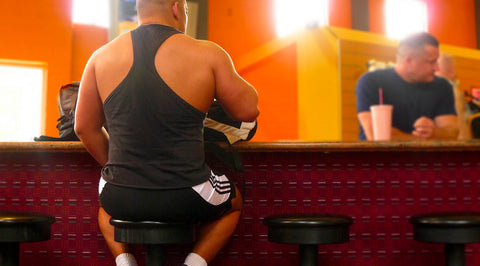
If there’s one food group we automatically lump in with fitness, it’s protein—after all protein builds muscles and helps with muscle recovery. But not all proteins are created equal and you may be wondering when to take whey protein, particularly if you’re using it to meet your fitness goals.
Whey protein is extremely popular in the fitness world these days because it’s a rich source of amino acids and glutathione, the “master antioxidant” but when to take whey protein is not as clear as the benefits it offers.
According to WebMD, you can certainly load up on protein before a workout, but your best bet pre-exercise is going to be in healthy carbs and fats to give you energy. Save the protein for after the workout, says WebMD, in order to maximize your recovery. It recommends 10-20 grams of protein post-workout.
But Mike Roussell, Ph.D. says differently on BodyBuilding.com. According to Roussell, “ingesting protein and amino acids prior to training may be even more beneficial.”
Roussell says that branched chain amino acids can provide your muscles more energy during your workout than just carbs or fats because they don’t get filtered by the liver, but rather head straight into the bloodstream and to the muscles.
“This is key because exercise causes the breakdown and oxidation of BCAAs,” Roussell explains. “Providing BCAAs to working muscles will prevent the need for your body to catabolize the working muscle itself.”
When it comes to whey protein specifically, Marc Perry, C.S.C.S., ACE-CPT told Men’s Fitness that whey protein is ideal post-workout because of its high protein content and quick absorption rate.
Research continues to point to spacing protein consumption throughout the day, ensuring each meal or snack has a protein component. And this just might be your best bet for your workout plans as well. Consume protein as part of your pre-workout meal to enhance your performance. Then also make it a big part of your post workout recovery and you should be meeting and even exceeding your fitness goals.
image: noodles and beef

With Thanksgiving under your belt—literally—you may be wondering how you’re going to fit into your Christmas party dresses (or suits) in the coming weeks. Starting your holiday mornings with high protein foods may help.
Let’s face it, the holidays really are the best of times and the worst of times. You’re probably reading this after spending yet another Thanksgiving Day filled with too much delicious food and too many family feuds. We love this time of year almost as much as we stress about it—whether that’s the political debates likely to happen around the dinner table, or wondering if all those hours at the gym are going to be undone one bite of pumpkin pie at a time. But despite all that, it is a lovely time, particularly with young children around reminding us of all the joy of the season.
While we have little control over the family insanity levels at our annual holiday gatherings, we can control whether we let the stress of it all go to our hips.
One way to keep the weight off this season (aside from showing restraint when it comes to sweets) is to fuel your body with a protein-rich breakfast. Starting your day with a high protein/slow-carb meal can help to keep you full and fueled, even if the rest of the day’s (week’s?) calories aren’t the cleanest or leanest.
A protein-rich breakfast (in the 30 grams range) that’s also boasting healthy slow carbs (think whole grain, fruits) can curb the cravings for sweets. Bonus: even if you can’t resist the whiff of pumpkin spice in the air, you may find that you can’t consume as much, and that of course, is a good thing.
Indulging is inevitable—and even important in keeping things in balance. But you can mitigate the damaging effects of going full doughnut. And you may still fit into that holiday outfit after all.
image: annieseats
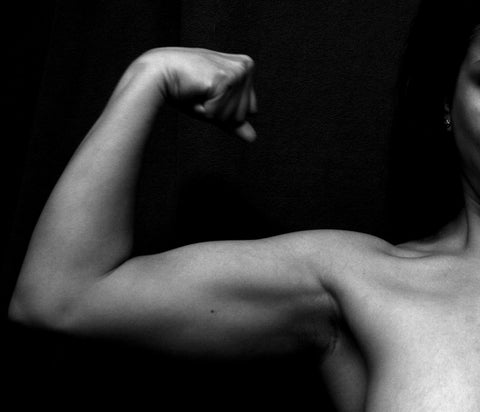
When it comes to fueling our bodies—from cognitive function to motor skills—we need a few critical macro nutrients: fat and carbs. You know glucose more likely as the sugars aka “dreaded carbohydrates.” And while fat has proven its worth in our diet, there are still public misconceptions about healthy fats and just how much we really need. But what about protein? Where does protein in the diet fit into the equation in boosting our body’s energy? Can we convert excess protein into sugars?
Protein, while not as key an energy source as carbs or fat, does play an important role in maintaining our energy levels by serving as the building block for healthy muscles and hormones that keep the body strong and balanced.
When we eat protein—be it from a steak, yogurt, an almond, or a lentil—it’s broken down into amino acids, which the body then essentially builds back into our protein. The protein in our body does different things as mentioned above, but in essence, you can think of protein kind of like the Internet for your body—it’s a system of transportation that keeps your body connected to itself. Protein ensures cellular communication and moving molecules around, like in building muscle fiber.
If the body is low on glucose or fat—our two primary sources of energy—it can use protein to create energy. But this typically comes at a cost: muscle loss chief among them. Your body will consume muscle mass to fuel brain and basic body functions. This is why a pure protein diet isn’t ideal, despite what cavemen may have told you.
The good thing here is that many proteins come connected to another macronutrient: fat or carbs. So if you’re downing a protein-rich whey smoothie (which, of course, we hope you are), you are also giving your body the fat (and possibly carbs) it needs to fuel your energy, as well as the protein to keep your system in a healthy condition.
As always, the food choices you make impact how they affect your body—a processed, poor-quality protein is harder for your body to understand and use. Those refined sprinkles-covered carbohydrates or the deep-fried kind also don’t do the body too many favors aside from a purely caloric gain, if not the dopamine rush from the sugars…So make your food choices healthy—and balanced.
Pair high-quality proteins with high-quality carbs and fats and keep them in balance. If you’re pregnant or strength-training then those are times to add more protein into your diet—and watch your carbs—but stay the middle path and keep a healthy balanced diet on your plate.
Image: boemski
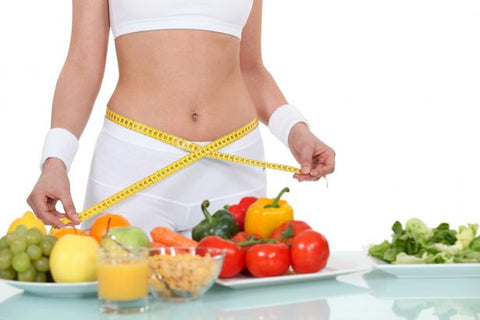
This time of year most of us have weight loss on our minds—if not immediately, for the post-holiday freak-out we’re sure to have when we step on the scale at our first visit back to the gym in, well, let’s just say a while.
We know there’s no magic pill to weight loss—it’s a combination of exercising more, eating less, and eating right. A high protein diet may help you meet your weight loss goals.
First, protein actually helps your body to burn fat. The body needs protein (or carbs) to create the energy needed to burn fat. And when you start to lose weight, that can often mean muscle loss too—and protein plays a critical role in keeping your muscles strong and healthy.
Protein is also important in regulating sugar in the body when paired with a carbohydrate (sugar). By regulating your blood sugar with protein, you’ll feel more stable and that means less of a sugar rush and crash, which usually leads to eating more sugar. So make sure you always eat a protein with every carbohydrate or PSL.
On that same note, protein can make you feel fuller longer. That’s because proteins take more time to digest, so your body isn’t ready to signal that it needs more food until the protein is already broken down. Plus, you actually burn more calories just by digesting protein-rich foods!
One of the most important functions of protein is in keeping your muscles strong and healthy, particularly after hitting the gym. Protein is beneficial to muscle repair and recovery, and strong healthy muscles can displace fat on the body, which is really what you’re after even if the number on the scale doesn’t move that much (muscle is denser than fat, so the more muscle you have versus fat, the leaner you’ll look, even if you technically weigh the same or more!).
It’s simple to ensure you’re getting enough protein throughout your day. Make it a part of every meal and snack—whether that’s a protein-based smoothie, a handful of nuts, eggs for breakfast or lunch, or a lean protein for dinner. You can even make sure your sweet treats and desserts come packed with protein—seeds, nuts, and dairy can all help to take the sugary edge off.
image: mahmoud99725

Need your whey protein fix but don’t have time to make it to the blender for a smoothie? Well, you may just want to grab a doughnut instead. That’s right, a doughnut.
But this is not just any doughnut, of course—leave those powdered sugar covered ones alone (that is, if you want to keep your abs in check)—reach for a pronut instead, the gluten-free high-protein doughnut that actually exists (no, you’re not dreaming).
The pronut comes by way of Australian health enthusiasts who wanted a healthy version of a doughnut, reports the Evening Standard. Recipes for the pronut craze include those based on zucchini, eggs, and yes, whey protein, along with coconut flour, making the pronut a relatively healthy take on the otherwise circle of empty calories.
Each doughnut contains as few as 85 calories, largely because unlike most doughnut varieties, they are baked, not fried,” reports the Evening Standard.
But while you’ll have to make a trip Down Under or to London to get your hands on a bakery-produced whey protein pronut—you can also make your own, from scratch, and you know, keep them in a fanny pack around your waist in case of emergency.
Cinnamon-Glazed Pronuts Recipe
Makes 8 pronuts
Ingredients
Pronuts:
1 cup whey protein
11/2 cups milk of choice
1 cup egg whites
1/3 cup coconut flour
3 tablespoons coconut oil
1 tablespoon vanilla extract
1 teaspoon baking powder
½ teaspoon salt
Cinnamon glaze:
1 scoop of whey protein (about 1/3 cup)
1/3 cup milk
1 teaspoon cinnamon
Directions
Preheat the oven to 325 degrees Fahrenheit.
Mix dry pronut ingredients together.
In a separate bowl whisk together milk, eggs, and melted coconut oil.
Add wet ingredients to dry and mix until it forms a cohesive dough. Scoop into donut molds.
Bake for 10-15 minutes until knife inserted into the doughnut comes out clean.
While the pronuts bake, whisk together the glaze ingredients. Drizzle atop cooled pronuts.
mamaloco Image: mamaloco


